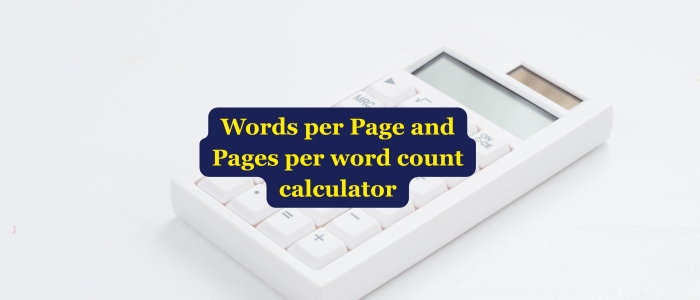Words Per Page Counter – Enter number of pages
Words Per Page Calculator – Enter number of words
Word Count Per Page: A Breakdown
When writing a blog, the number of words per page depends on factors like page size, spacing, and font size. Below is a breakdown of how different formatting styles affect word count per page.
Page Size and Word Count
The two most commonly used page sizes are A4 (8.27″ × 11.69″) and Letter (8.5″ × 11″). While they are similar in size, the difference in width slightly affects word distribution. A4 pages tend to accommodate slightly more words per page than Letter-sized pages.
Effect of Spacing on Word Count
- Single-spaced text has more words per page because there is no extra space between lines.
- Double-spaced text reduces the number of words per page since each line has additional spacing, making the text easier to read but increasing page count.
Estimated Word Count Per Page
| Page Size | Spacing | Font Size (12pt) | Words per Page |
|---|---|---|---|
| A4 | Single-spaced | 12pt | 500–550 words |
| A4 | Double-spaced | 12pt | 250–275 words |
| Letter | Single-spaced | 12pt | 450–500 words |
| Letter | Double-spaced | 12pt | 225–250 words |
Word Count for Long-Form Blogs
A long blog post typically falls between 1,500 and 3,000 words. Based on the word count per page, here’s how many pages a long blog would take:
- 1,500 words → 3 A4 pages (single-spaced) or 6 A4 pages (double-spaced)
- 2,000 words → 4 A4 pages (single-spaced) or 8 A4 pages (double-spaced)
- 3,000 words → 6 A4 pages (single-spaced) or 12 A4 pages (double-spaced)
Key points
The word count per page varies depending on formatting choices, making it important to plan blog length based on readability and space constraints. If you’re aiming for a long blog, using single spacing allows for more words per page, while double spacing enhances readability.

How Many Pages Is 500 Words?
A 500-word document typically takes up one A4 page (single-spaced) or two A4 pages (double-spaced) when using a standard 12-point font like Times New Roman or Arial. If written on a Letter-sized page, it remains roughly the same, slightly expanding due to the page width.
How Many Pages Is 1000 Words?
A 1,000-word piece will fill approximately two A4 pages (single-spaced) or four A4 pages (double-spaced). This length is common for essays, blog posts, and reports, making it ideal for in-depth discussions while still being easily readable.
How Many Pages Is 1200 Words?
A 1,200-word document spans around 2.5 A4 pages (single-spaced) or five A4 pages (double-spaced). This is often the length of well-researched articles, business reports, or case studies.
How Many Pages Is 1500 Words?
A 1,500-word document is roughly three A4 pages (single-spaced) or six A4 pages (double-spaced). This is a standard length for long-form blog posts, detailed essays, or comprehensive research pieces.
How Many Pages Is 2000 Words?
A 2,000-word piece occupies around four A4 pages (single-spaced) or eight A4 pages (double-spaced). This word count is common for white papers, extended reports, or academic essays that require depth and analysis.
How Many Pages Is 3000 Words?
A 3,000-word document takes up approximately six A4 pages (single-spaced) or 12 A4 pages (double-spaced). This length is suitable for eBooks, in-depth research papers, or pillar blog posts that require comprehensive coverage of a topic.
By understanding the page count for different word counts, writers can structure their content effectively to enhance readability and meet specific requirements.
How many words is this?
“Wondering how many words your text has? Word count matters for SEO, readability, and meeting content guidelines. Whether you’re writing an article, essay, or social post, online word counters provide instant results, helping you optimize your content effortlessly.”



